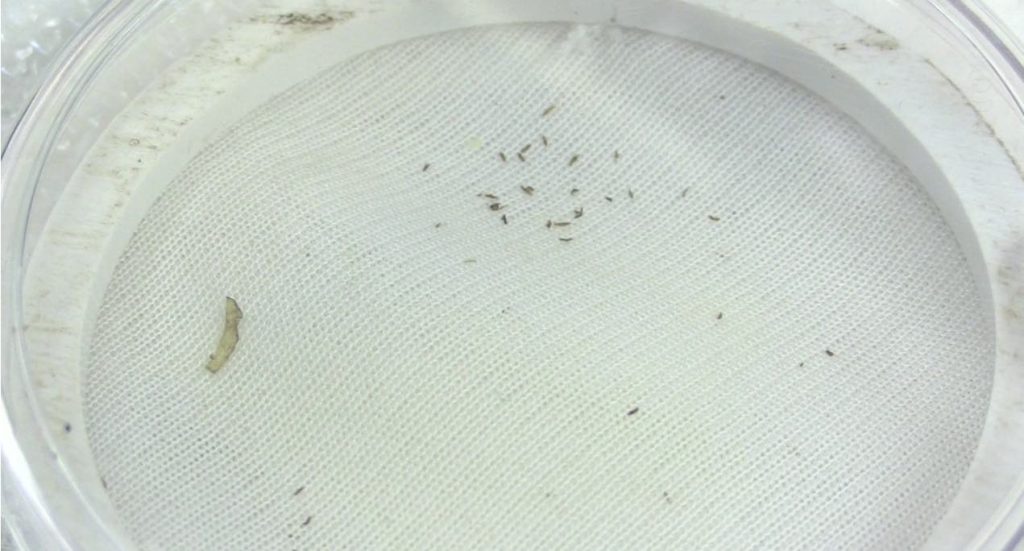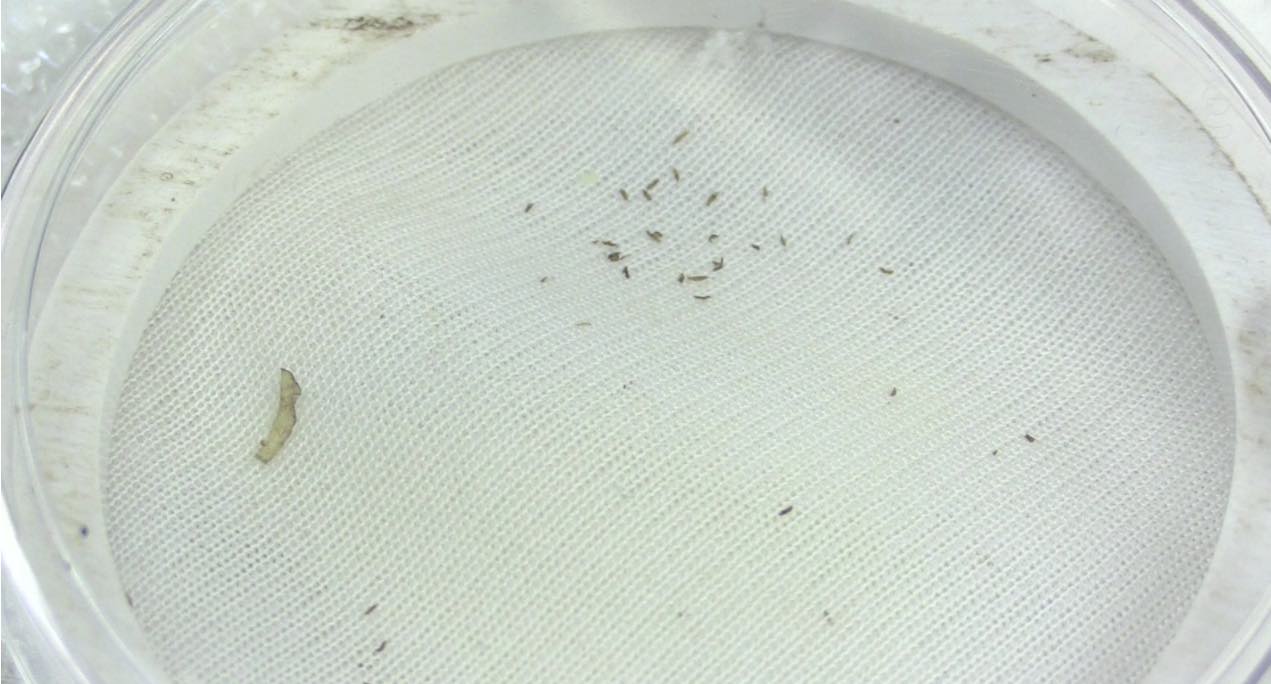
Researchers have designed a textile called Plant Armor that forces insects to navigate a maze-like path if they want to reach a farmer’s crop.
Based on their findings, North Carolina State University researchers said the Plant Armor could provide a more effective alternative for insect protection—one that is chemical-free.
“We found it’s possible to use this new technology to protect against insects we didn’t think we could protect against,” said the study’s first author Grayson Cave, a doctoral candidate at NCSU. “We’ve shown we can use a mechanical barrier that will protect against tobacco thrips and possibly other insects, allowing the plant to grow and thrive underneath.”
Previously, plant covers have been designed to exclude insects based on size alone—like a window screen—researchers said. However, that strategy can be problematic for trying to keep out insects as small as tobacco thrips, which are about the size of a pencil point.
“To exclude insects that are really small using traditional textile cover designs, the size of the openings would have to be so small that it would also prevent water, air and moisture from penetrating,” said the study’s senior researcher Mike Roe, William Neal Reynolds Distinguished Professor of Entomology at NC State. “We had to come up with another way of excluding the insects other than just based on pore size.”
MORE: Simple Bacteria Spray Can Solve India’s Air Pollution and Also Enrich Local Farmers
To that end, the researchers designed a three-layer, 3D cover knitted using clear yarn in the outermost and innermost layers. The yarn, which can be made from recycled plastic, still allows sunlight to pass through, but restricts insects from reaching plants. A knitted inner layer is sandwiched perpendicular to the two surrounding layers, creating a maze-like structure within the Plant Armor.
“With our design, the insect has to figure out how to get through the maze to get to the plant on the other side,” Roe said. “The tortuosity makes it more challenging to get through. The insect has a certain amount of time to find food or it will die. That time is relatively fast for a young insect.”
In the first of three experiments, researchers found it took significantly longer for insects to penetrate the Plant Armor. They placed a cabbage leaf and 10 tobacco thrips inside a Petri dish, separated by the Plant Armor or another crop cover. It took approximately three hours for five of the thrips to make it through the Plant Armor, while it took only 12 minutes for them to cross a commercially available, single-layer crop cover. In the same experiment with young, unfed caterpillars, their design was nearly 90% effective at preventing unfed young caterpillars from crossing the Plant Armor in 12 hours.
LOOK: Company’s Innovative Smart Beehive Gets $80 Million in Funding to Save Bees From Any Hazard
“In real life, the insect has a lot of other choices of where to go to find food; this was a worst-case scenario where they had only one place to go,” Roe said. “So we expect in the natural environment, the protection is going to be much greater.”
Higher yields
When researchers tested how well they could protect potted cabbage plants inside a cage with unfed caterpillars, uncovered plants were infested and almost completely eaten, while plants covered and sealed with Plant Armor were not. They did not find a single caterpillar on the covered plants after 10 days.
Their last experiment was a three-month, outdoor field trial testing how well the Plant Armor worked when they used it like a greenhouse cover. The researchers found plants covered with Plant Armor were larger on average; the weight of cabbages under the Plant Armor was almost three times larger than the control.
Researchers said more work is needed to determine whether they successfully excluded insects due to the thickness, pore size or maze-like structure of the inner layer. However, their work provides evidence that their chemical-free design can work against tiny critters.
CHECK OUT: These Solar Panels Also Pull in Water Vapor to Grow Crops in the Desert
“Thrips are extremely tiny,” Cave said. “If we could keep them out, we think we have a good chance of keeping other, larger insects out. And as for the neonate caterpillars—they have to feed immediately, and they’re the tiniest stage of caterpillars. This gives us some good, preliminary data that this would work toward being protective against other caterpillars too.”
Researchers think their crop cover could be a good alternative for high-value crops like grapes. In future research, they also want to explore whether the cover could be used to help protect plants in extreme conditions—and as the climate changes.
“Part of what we’re doing is finding new, smart textiles,” said study co-author Andre West, associate professor of textile, apparel and technology management at NC State and director of Zeis Textiles Extension. “We think this design could help farmers in extreme environments or where crop production is limited in certain areas. It could also be an alternative for organic farmers. Not only is the product itself made with some recycled materials, but it could also be recycled again.”
The study, “Novel 3-D Spacer Textiles to Protect Crops from Insect-Infestation and that Enhance Plant Growth,” was published online in the journal Agriculture.
Source: NC State University
SHARE This Breakthrough Yield of Good News With Friends




















